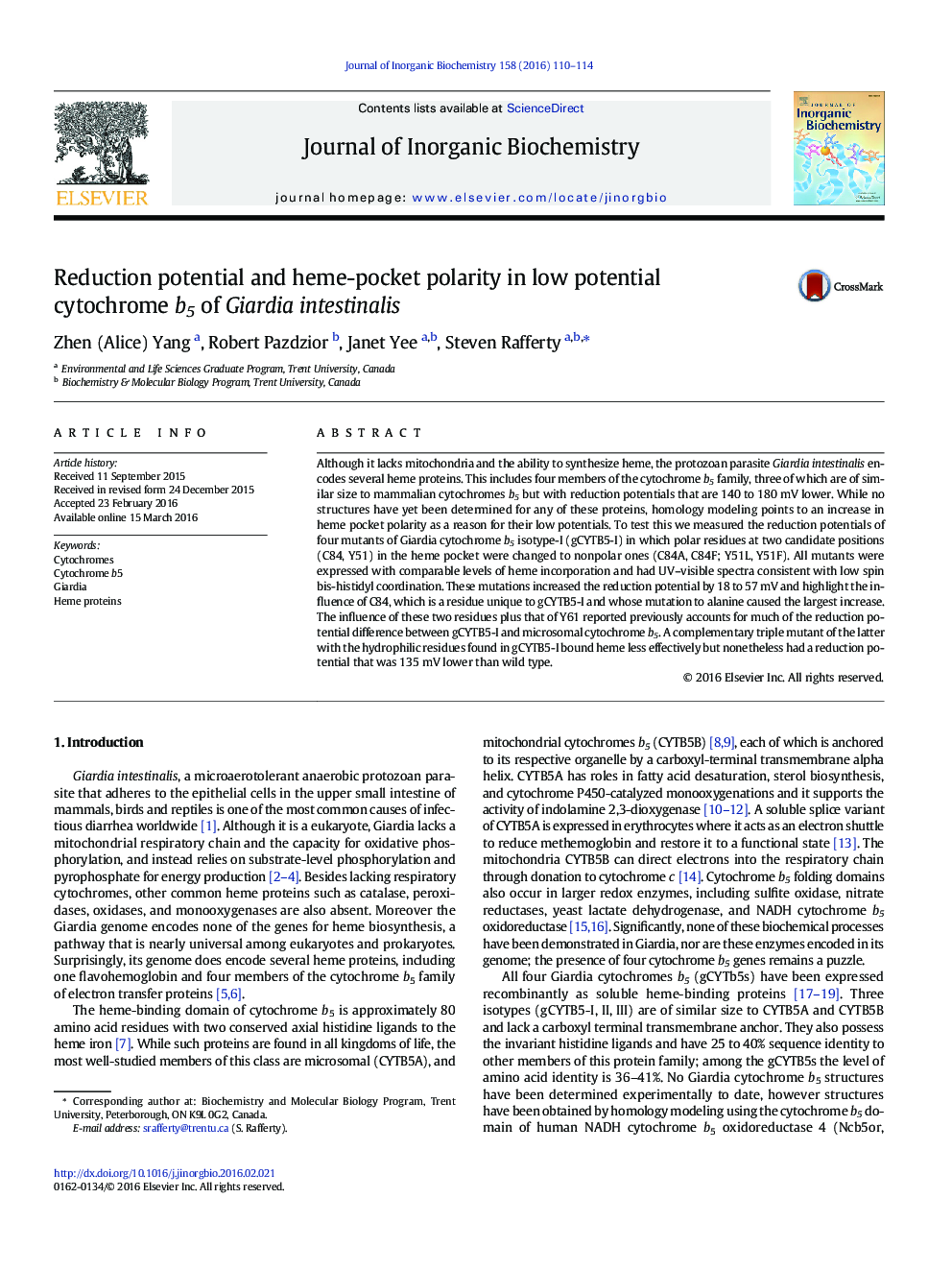| کد مقاله | کد نشریه | سال انتشار | مقاله انگلیسی | نسخه تمام متن |
|---|---|---|---|---|
| 1316844 | 1499429 | 2016 | 5 صفحه PDF | دانلود رایگان |

• Giardia possesses low potential cytochromes (gCYTB5s) of unknown function.
• Hydrophilic residues within the heme pocket likely account for their low potentials.
• Mutation of these residues in gCYTB5-I raises E°′ by ~ 20 to 100 mV.
• Three residues determine the difference in E°′ between gCYTB5-I and bovine CYTB5A.
• Complementary changes in bovine CYTB5A destabilize heme binding and lower its E°′.
Although it lacks mitochondria and the ability to synthesize heme, the protozoan parasite Giardia intestinalis encodes several heme proteins. This includes four members of the cytochrome b5 family, three of which are of similar size to mammalian cytochromes b5 but with reduction potentials that are 140 to 180 mV lower. While no structures have yet been determined for any of these proteins, homology modeling points to an increase in heme pocket polarity as a reason for their low potentials. To test this we measured the reduction potentials of four mutants of Giardia cytochrome b5 isotype-I (gCYTB5-I) in which polar residues at two candidate positions (C84, Y51) in the heme pocket were changed to nonpolar ones (C84A, C84F; Y51L, Y51F). All mutants were expressed with comparable levels of heme incorporation and had UV–visible spectra consistent with low spin bis-histidyl coordination. These mutations increased the reduction potential by 18 to 57 mV and highlight the influence of C84, which is a residue unique to gCYTB5-I and whose mutation to alanine caused the largest increase. The influence of these two residues plus that of Y61 reported previously accounts for much of the reduction potential difference between gCYTB5-I and microsomal cytochrome b5. A complementary triple mutant of the latter with the hydrophilic residues found in gCYTB5-I bound heme less effectively but nonetheless had a reduction potential that was 135 mV lower than wild type.
Three hydrophilic residues within the heme pocket contribute to the low reduction potential (− 171 mV vs SHE) of Giardia cytochrome b5 isotype-I.Figure optionsDownload as PowerPoint slide
Journal: Journal of Inorganic Biochemistry - Volume 158, May 2016, Pages 110–114